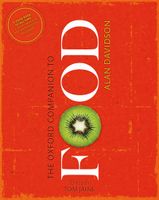Advertisement
Sandesh
Published 2014
There are innumerable types of sandesh, but all are made from the same basic mixture of pressed curd and sugar or syrup cooked together, sugar being preferred as giving a better flavour. The more curd in the mixture the finer the quality, so that the best sandesh, with four times as much curd as sugar, are less sweet than cheaper types with up to twice that proportion of sugar. The mixture takes on a texture like that of fudge. It may be stuffed, for example with a mixture of khoya (condensed milk, see milk reduction) and nuts. Often it is pressed into decorative shapes in small wooden moulds; otherwise simply cut into pieces. Some kinds of sandesh are named for their shape: gutke (flat ended) or badam takti (takti means lozenge shaped; badam, the ‘Indian almond’—see myrobalan—used in the mixture). They may be pressed in the shape of fruits, with which they are flavoured and whose name they bear: for example, am sandesh is flavoured with preserved mango and shaped like a mango, and there are also ata (custard apple) and kamranga (sour plum) sandesh. Other sandesh are stamped with, and named for, mottoes, proverbs, and the like: sukhe theko (‘God bless you’), pati param guru (‘the husband is the wife’s guru’) are examples. In British India English mottoes were common: ‘forget me not’ and even ‘God save the King’.


